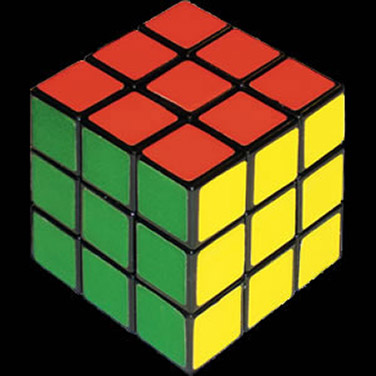Rubik's Cube

Originally called the Magic Cube, the Rubik's Cube is a puzzle for one person. At first glance, it consists of twenty-seven individual cubes, which form a large 3x3x3 cube. In actual fact, however, it only consists of twenty-one elements, namely an axis system with six fixed central pieces, eight tricoloured corner pieces and twelve bicoloured edge pieces. The essence of the puzzle is to arrange the coloured cubes in such a way that each side is all one colour.
History
The cube was invented by Ernö Rubik, a Hungarian professor of physics and design, in 1974. It was patented one year later and launched on the Hungarian market in 1977. From 1980, the Rubik's Cube spread all over the world. By the early 1980s, several million cubes had already been sold worldwide. Magazines like "Bild der Wissenschaft" (1980) or "Der Spiegel" (1981) did features on the Rubik's Cube and revealed a solution to a broad audience. The basic principle of the solution consisted in arranging one level after another, starting with the top, then the middle and finally the bottom.
Mathematics
The mathematical theory of the Rubik's Cube has been examined extensively. Any movement of the cube can be understood as a permutation of the forty-eight movable parts – the twenty-four squares of the tricoloured corner pieces and the twenty-four squares of the bicoloured edge pieces. The permutations that appear as possible movements form a finite group. Therefore, studying the cube can concentrate on examining a group with 43 252 003 274 489 856 000 elements.
In 2010, a computer-aided proof showed that every configuration of the Rubik's Cube can be solved with a maximum of 20 moves (face turns). Four years later, the result was found that a maximum of 26 moves are needed, if only quarter turns were counting as movement.